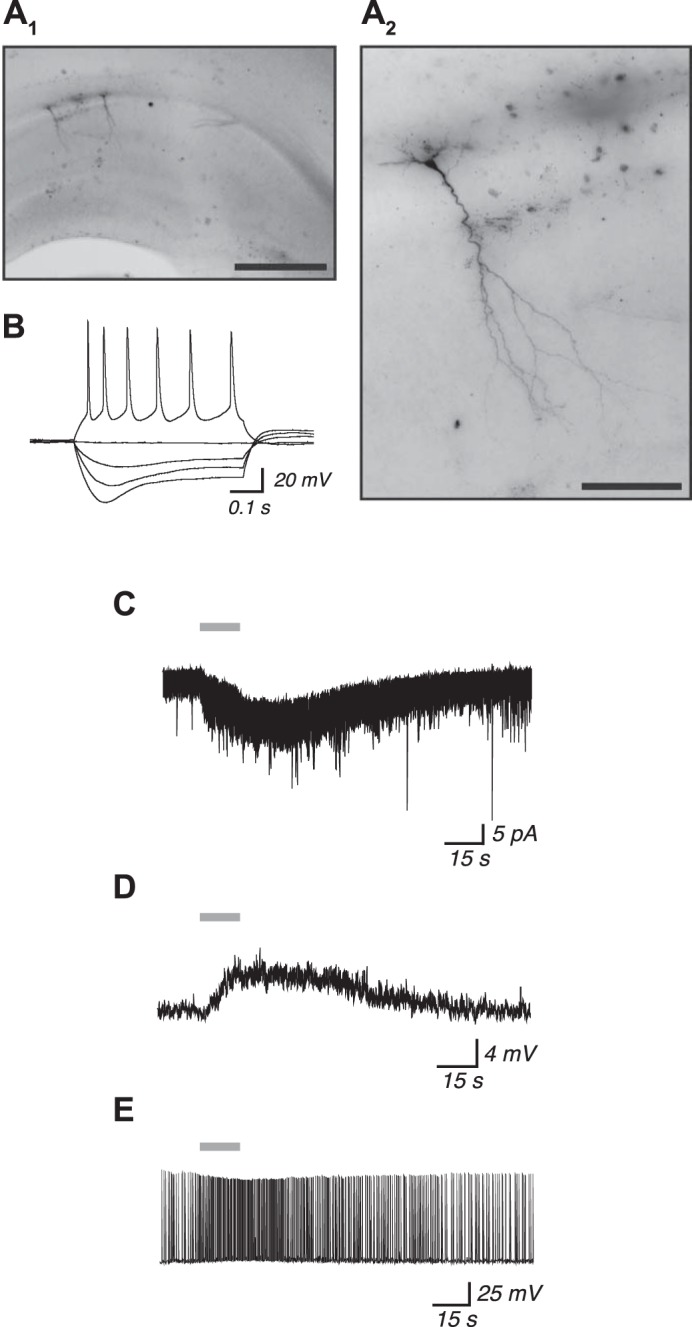Fig. 1.

Activation of heteromeric nicotinic acetylcholine receptors facilitates excitation of young postnatal mouse CA1 pyramidal neurons. A1: representative photomicrograph of the dorsal hippocampus from a mouse aged postnatal day 10 showing 2 CA1 pyramidal neurons that were analyzed for electrophysiology and visualized post hoc using biocytin. Scale bar, 500 μm. A2: magnified view of the neuron at left in A1 shows its characteristic CA1 pyramidal neuron morphology. Scale bar, 100 μm. B: current-clamp recording from the neuron in A2 showing changes to membrane potential following the injection of 500-ms depolarizing and hyperpolarizing current steps, which are consistent with typical responses from CA1 pyramidal neurons. Application of 1 mM ACh for 15 s (gray horizontal bars) results in an inward current response (C), depolarization from rest (D), and an acceleration of action potential firing (E). All recordings were made in the continuous presence of 200 nM atropine to block muscarinic acetylcholine receptors and 10 nM MLA to block α7 subunit-containing nicotinic acetylcholine receptors.
